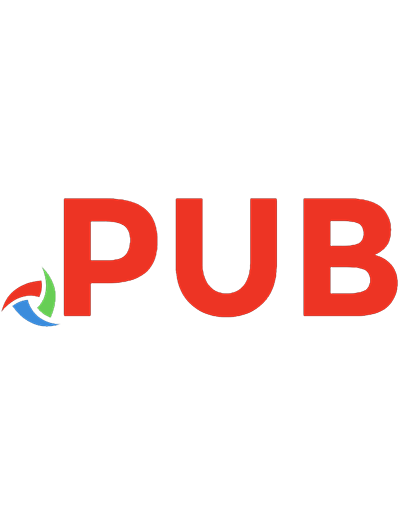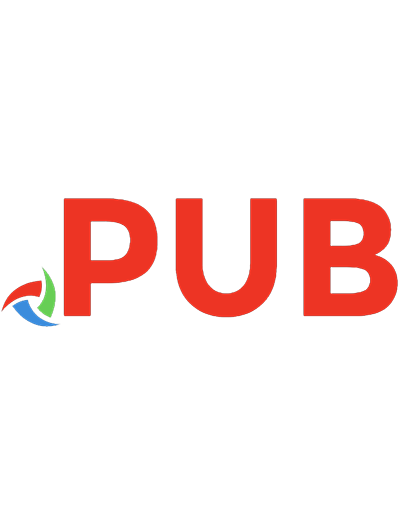The Complete Guide to the Theory and Practice of Materials Development for Language Learning [1 ed.] 111905477X, 9781119054771
The Complete Guide to the Theory and Practice of Materials Development for Language Learning provides undergraduate and
169 66 4MB
English Pages 416 [417] Year 2017
Table of contents :
The Complete Guide to the Theory and Practice of Materials Development for Language Learning
Contents
Preface
References
1 Materials Development So Far
Introduction
Materials Development
Materials
Commercial Publications
Coursebooks
Digital Materials
Supplementary Materials
Self-Access Materials
Publications about Materials Development
Materials Development Projects
Conclusion
What Do You Think?
References
2 Issues in Materials Development
Introduction
Textbooks
The Value of Textbooks
The Need for Published Materials
Textbooks as Scripts or as Resources?
Pedagogic Approaches
Authenticity of Texts and Tasks
Should Materials be Forms Focused or Form Focused?
Methodologies Used in Textbooks
The Topic Content of Language Learning Materials
Acceptability
Humanizing Materials
Ideology in Materials
Conclusion
What Do You Think?
References
3 Materials Evaluation
Introduction
What the Early Literature Tells Us about Materials Evaluation
Establishing Criteria and Developing Evaluation Instruments
Reporting Evaluations
What the Current Literature Tells Us about Materials Evaluation
Establishing Criteria and Developing Evaluation Instruments
Reporting Evaluations
The Principles and Procedures of Materials Evaluation Which We Recommend
When Developing Materials
When Reviewing Materials
When Trialing Materials
When Selecting Materials
When Adapting Materials
When Using Materials
After Using Materials
Conclusion
What Do You Think?
Tasks
References
4 Materials Adaptation
Introduction
Definition of Adaptation
Scope and Range of Adaptation
The Growing Significance of Adaptation: Is Adaptation a Necessity or an Option?
Who Does Adaptation?
Overview of This Adaptation Chapter
What the Literature Tells Us about Materials Adaptation
Do Teachers Actually Adapt Teaching Materials?
Adaptation—Practice and Theory
Do Teachers Adapt Materials? Is Adaptation Necessary?
Why Do Teachers Adapt Materials? What For?—The Reason and Purpose of Adaptation
How Do Teachers Adapt Materials?—Procedures and Techniques of Adaptation
What Kinds of Resources on Adaptation Are Available?—Teacher Education and Literature
Minor Adaptation
The Principles and Procedures of Materials Adaptation that We Recommend
An Example of an Adaptation
Target Learners
Coursebook
Unit for Adaptation
Reasons for Adaptation
Objectives of the Adaptation
The Adaptation
Conclusion
What Do You Think?
Tasks
Further Reading
References
5 The Development of Materials
Introduction
How Writers Write
Principled Development of Materials
Practical Guidance to Writers in the Literature
Recommendations for Developing Materials
Working as a Team
Articulating Principles
A Sample of our Universal Criteria
A Sample of our Local Criteria
Making Use of Frameworks
Text-Driven Frameworks
Following Systematic Procedures for Materials Development
Conclusion
What Do You Think?
Task
Further Reading
References
6 The Process of Publishing Coursebooks
Introduction
Kinds of Textbooks
Global Coursebooks
Adapted Coursebooks
Local Coursebooks
Transplanted Coursebooks
The Development Process of Coursebooks
Stage 1: Planning
Stage 2: Establishing a Writing Team and Principles
Stage 3: Drafting and Feedback
Stage 4: Production
Stage 5: Post-production
Global Coursebooks
Global Coursebooks—Stage 1: Planning
Global Coursebooks—Stage 2: Establishing Writing Team and Principles
What are the Guiding Principles Underlying the Coursebooks?
Global Coursebooks Stage 3: Drafting and Feedback
Global Coursebooks Stage 4: Production
Global Coursebooks Stage 5: Post-production
Local Coursebooks
Factors that We Believe will Help Successful Development of a Coursebook
Conclusion
What Do You Think?
Task
Further Reading
References
7 Developing Digital Materials
Introduction
What Does Research Say about the Effectiveness of ICT in Language Education?
Diverse Levels of Digital Adoption in Education
Are Digital Materials Better at Facilitating Second-Language Acquisition?
Second Language Acquisition Principles
Samples of Digital Materials
Match Between the SLA Principles and Selected Digital Materials
What Are the Strengths and Weaknesses of Digital Materials?
Basic Requirements
Durability
Choice
Linking
Interactivity
Mobility
Multifunctionality
A Summary of the Potential Benefits and Problems of Using Digital Materials
Potential Benefits
Problems
Our Recommendations for Using and Developing Digital Materials
Conclusion
What Do You Think?
Tasks
Further Reading
References
8 Developing Materials for the Acquisition of Language
Introduction
The Acquisition of Grammatical Competence
Coursebooks
Pedagogical Approaches
Our Recommendations
The Acquisition of Lexical Competence
Coursebooks
Pedagogical Approaches
Our Recommendations
The Acquisition of Pragmatic Competence
The Coursebooks
The Literature
Our Recommendations
Tasks
Further Reading
References
9 Developing Materials for the Development of Skills
Introduction
Skills and Strategies
The Notion of Skills
The Notion of Strategy
Differentiating Skills and Strategies—Are We Any Clearer?
Teaching Skills and Strategies—a Matter of Faith?
Language Teaching Must Go On?
Towards Unification of Current Thinking in Different Strands of Disciplines for Developing Materials for the Four Skills
Does This Sound Familiar?
Convergent Factor 1: Beliefs and Myths about the Native Speaker Model and their Consequences
Convergent Factor 2: Process and Product-Based Approaches
Convergent Factor 3: The L1 Acquisition Order of the Four Skills—Listening is the Most Fundamental of all the Skills!
The Listening Process
Comparison of Learning Skills in L1 and L2
Convergent Factor 4: Explicit Learning and Implicit Learning
What the Literature Says About Materials for Skills Development
Our Recommendations on Developing Materials for the Four Modes of Communication
What Do You Think?
Tasks
Further Reading
References
10 Developing Materials for Young Learners
Introduction
The Literature
Our Recommendations for Developing and Using Materials for Young Learners
Make Maximum Use of Stories
TPR Plus
Games
Drama
Songs and Chants
Drawings
Making Things
Scenarios
Content and Language Integrated (CLIL) Activities
Tasks
Discovery Activities
Multi-dimensional Representation Approaches
Conclusion
What do You Think?
Tasks
Further Reading
References
11 Developing Materials for Teenagers and Adults
Introduction
Teenagers
Descriptions of Teenagers
Characteristics of Teenagers
Some Recommended Principles and Approaches that are Likely to be Suitable for Teenagers
Principles of Materials for Teenagers
Approaches
Example of Task-Based Materials for Teenagers
Other Published Examples for Teenage Learners
Materials for Young Adults and Adults
Descriptions of Young Adults and Adults
Characteristics of Young Adults and Adults
Principles of Materials for Young Adults and Adults
Our Recommendations for Developing and Using Materials for Young Adults and Adults
Conclusion
What do You Think?
Tasks
Further Reading
References
12 Developing Materials for Different Levels, Users, and Purposes
Introduction
Materials for Different Levels
The Literature
Published Materials
Our Recommendations
Beginner/Elementary
Lower Intermediate/Intermediate
Upper Intermediate/Advanced
Materials for Different Users
The Literature
Published Materials
Our Recommendations
Materials for Different Purposes
The Literature
Materials for English for Specific Purposes (ESP) and English for Academic Purposes (EAP)
Materials for English for Speakers of Other Languages (ESOL)
English as an International Language (EIL) and English as a Lingua Franca (ELF)
Materials for Examination Preparation
Materials Development for Teacher Training
Our Recommendations
Conclusion
What Do You Think?
Tasks
References
13 Visuals, Layout, and Design
Introduction
Visuals
Kinds of Visuals
Objectives of Visuals
Characteristics of Visuals
Layout
The Effects of Layouts
Design
Appearance
Functionality
Analyzing Visuals, Layout and Design—An Example
Some Issues in Using Visuals, Layout, and Design
The Principles and Procedures of Visuals, Layout and Design that we Recommend
When Writing Materials for Materials Writers and Publishers
For Teachers
Tasks
References
14 Writing Instructions for Language-Learning Activities
Introduction
Issues in Writing and Giving Instructions
Which Language should be Used for Writing and Giving Instructions?
Should Instructions be Exemplified?
Do Instructions Have to Be Linguistic?
How Can Instructions be Evaluated?
Criteria for Writing and Giving Instructions
1. Salience
2. Separation
3. Sequencing
4. Staging
5. Sufficiency
6. Succinctness
7. Simplicity
8. Specificity
9. Unambiguity
10. Standardization
11. Self-Evidence
What Do You Think?
Tasks
References
15 Materials Development Research
Introduction
Recent Research
Areas of Research Referred to in this Volume
Evaluating the Effects of Materials
Evaluating the Effectiveness of Different Pedagogic Approaches
Evaluating the Effects of Adaptations of Materials
Analysis of Materials
Discovering What Publishers Want from Materials
Discovering What Publishers Do with Materials
Discovering What Teachers Want from Materials
Discovering What Teachers Do with Materials
Discovering How Writers Write Materials
Discovering what Learners Want from Materials
The Authenticity of Materials
The Washback Effect of Assessment on Materials Development and Use
The Impact of Materials Development on Teacher Development
Proposed Areas of Research
The Effects of Different Types of Materials on the Learners Ability to Use the Target Language Effectively
Researching the Effects of Typical Coursebook Activities
Researching the Implementation of Innovative Materials
Ways of Persuading Users of the Value of Innovative Materials and of Helping Them to Benefit from the Innovations
Researching the Effects of Unfamiliar Language on Students Ability to Understand and Enjoy Stories
Conclusion
What Do You Think?
Tasks
References
Conclusion
References
Resources Useful for Materials Developers
Associations with Materials Development Journals/Newsletters
Corpora
Journals with Relevance to Materials Development
Research Journals
Professional Journals
Practical Guides to Materials Development
Recent Publications on Materials Development
Sources of Activities
Sources of Texts and Images
Newspapers
Jokes
Poems
Stories
Adverts
Videos
Images
Reference
Index
EULA
![The Complete Guide to the Theory and Practice of Materials Development for Language Learning [1 ed.]
111905477X, 9781119054771](https://dokumen.pub/img/200x200/the-complete-guide-to-the-theory-and-practice-of-materials-development-for-language-learning-1nbsped-111905477x-9781119054771.jpg)

![Computer Assisted Language Learning: Theory to Practice [1 ed.]](https://dokumen.pub/img/200x200/computer-assisted-language-learning-theory-to-practice-1nbsped.jpg)






![Science Education in Theory and Practice: An Introductory Guide to Learning Theory [1st ed.]
9783030436193, 9783030436209](https://dokumen.pub/img/200x200/science-education-in-theory-and-practice-an-introductory-guide-to-learning-theory-1st-ed-9783030436193-9783030436209.jpg)
![Authenticity in Materials Development for Language Learning [1 ed.]
9781527504271, 9781443879507](https://dokumen.pub/img/200x200/authenticity-in-materials-development-for-language-learning-1nbsped-9781527504271-9781443879507.jpg)